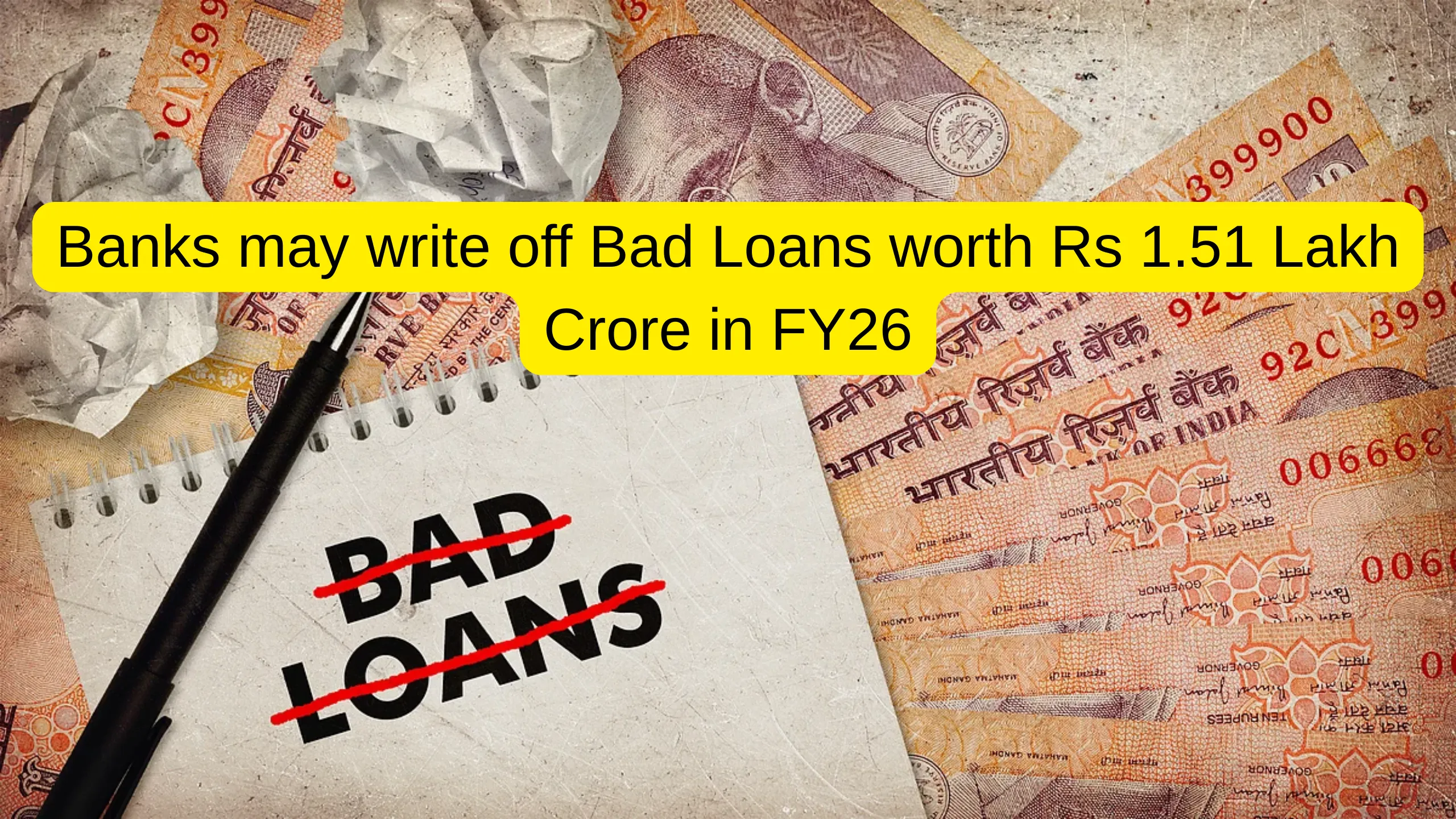Banks may write off Bad Loans worth Rs 1.51 Lakh Crore in FY26

| ➡️ Get instant news updates on Whatsapp. Click here to join our Whatsapp Group. |
Indian commercial banks may write off bad loans worth ₹1.51 lakh crore in the financial year 2025–26 (FY26), according to credit rating agency ICRA. This step is being taken so that banks can clean up their balance sheets by removing loans that are unlikely to be repaid. In the previous financial year (FY25), banks had written off bad loans worth around ₹1.37 lakh crore.
The process of writing off bad loans is common among banks. It means that when a loan becomes a non-performing asset (NPA)—in other words, when it is not being repaid for a long time—banks eventually remove it from their books after making full provisions over time. These provisions are set aside gradually across multiple years as per RBI rules, so the burden doesn’t come all at once.
In FY26, public sector banks (PSBs) are expected to write off around ₹93,000 crore of bad loans, while private banks may write off around ₹57,000 crore. Bankers say that a large portion of these written-off loans will be from retail borrowers (like personal loans and credit cards) and SMEs (small and medium businesses), because lending in these areas has increased in recent years.
ICRA also gave an updated estimate for credit growth in FY26. It expects that the total amount of loans given by banks will grow by around 10.8% to 10.9%, reaching ₹20.2 lakh crore. This is slightly higher than their previous estimate of 9.7% to 10.3% growth. In FY25, credit growth stood at 10.9%, or ₹18 lakh crore. The increase in lending is being supported by easier regulations from the Reserve Bank of India (RBI).
However, there’s a downside too. Because the RBI is expected to reduce the repo rate (the rate at which it lends to banks) by a total of 0.75% (75 basis points) starting February 2025, the interest income of banks may be affected. As a result, banks’ net interest margins (NIMs)—which is the difference between what they earn on loans and what they pay on deposits—may fall by 15–17 basis points in FY26. This means banks may earn slightly less from their lending business, although overall profits are expected to remain at comfortable levels.
The asset quality of banks (i.e., how healthy their loans are) will remain something to watch closely. ICRA expects that new NPAs may increase slightly in the coming months, while recoveries (getting back money from old NPAs) might slow down. As a result, gross NPAs (GNPAs) may rise from 2.5% in FY24 to 2.6% in FY25, and further to 2.8% in FY26. This means a slightly higher portion of loans may go bad.
Another important point is the credit-to-deposit ratio, which remains high. This means that banks are giving out a lot of loans compared to the deposits they are collecting. Because of this, banks are competing hard to attract depositors and may not reduce deposit interest rates much. On the other hand, lending rates (the rates banks charge borrowers) may come under pressure due to falling repo rates and more competition from sources like the bond market.
In short, while banks are expected to grow their lending and clean up their balance sheets by writing off bad loans, they also face challenges like lower margins, pressure on profits, and rising NPAs in the next financial year.

Why give such loans?. No one is responsible for writing off such loans . What’s wrong with sanctioned loans . Whether post disbursement follow up is lacking, despite various types of audits/inspections. Responsibility should be fixed before writing them off. It’s like penalties paid BY URBAN BANKS by debit to p&l with out fixing the liability on the erring staff/BoD.